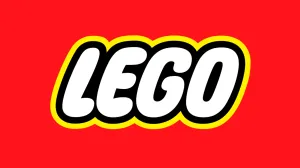
Dungeons & Dragons has put the spotlight back on Tasha, a character tied to its earliest adventures. Earlier today, Dungeons & Dragons announced Tasha’s Cauldron of Everything, a new rules expansion that brings 22 new subclasses, more player options, spells, and feats, and a section for DMs to use when planning their next campaign. The new book continues the naming convention started by Volo’s Guide to Monsters, which replaces the more mundane titles like Monster Manual 2 or Player’s Handbook 3 with titles that feature recognizable characters from D&D’s long lore.
Videos by ComicBook.com
Tasha’s history within Dungeons & Dragons is actually more complicated than players might think. Most players likely know of Tasha from the spell Tasha’s Hideous Laughter, a quintessential D&D spell that co-creator Gary Gygax first introduced way back in 1982. Gygax named Tasha after a young fan who wrote letters to him in the early days of D&D, following a common trend of naming spells after either fans or characters from his own home games. Gygax provided no further context for who Tasha was, but an adventure published in Dragon #83 (about two years after Tasha’s Hideous Laughter first appeared in the pages of that magazine) mentioned a “Natasha the Dark” in an adventure exploring Baba Yaga’s hut.
At the same time that Dungeons & Dragons first introduced Tasha in the pages of Dragon magazine, they also published The Lost Caverns of Tsojcanth, an adventure where players explored caverns once occupied by the powerful arch-mage Iggwilv. Iggwilv became a recurring character in D&D adventures, an unquestionably powerful wizard and rival to the likes of Mordenkainen. Iggwilv was best known for creating the Demonimicon, a powerful and dangerous artifact, as well as her ties to various demon lords. She and the demon lord Graz’zt even had a child, the demi-god Iuz, who was also featured in multiple D&D adventures. Iggwilv became an iconic D&D villain, a character with multiple artifacts and spells associated with her who was powerful enough to manipulate even demon lords.
It wasn’t until 2007 that Wizards of the Coast revealed that the unassuming and mysterious Tasha was actually Iggwilv. The adventure Expedition to the Ruins of Greyhawk revealed that Iggwilv once joined the Company of Seven, a group of famous adventurers, under the guise of Tasha. Tasha’s true motivations were unclear, but the adventure spells out the connection between the two characters. The final issue of Dragon, issue #359, repeated the claim that Tasha and Iggwilv were one and the same, and were also related to Baba Yaga’s adopted daughter Natasha. A remake of the Dancing Hut adventure published in Dungeon #196 further established that Natasha the Dark would eventually become Iggwilv.
Wizards of the Coast is continuing to use the unified “Tasha/Iggwilv,” but seems to be making even more changes to make the character a bit more ambiguous. In a call with media several weeks ago, lead rules designer Jeremy Crawford pushed back on the idea that Tasha could be described by a single type of alignment, stating that her alignment was whatever suited her current plans best. That’s a definite change from her previous depiction as a “chaotic evil” sort of character, and reflects a further development of her character beyond that of the oftentimes stereotypical scheming seductress that Iggwilv was portrayed as in past adventures.
We’ll find out more about Tasha in Tasha’s Cauldron of Everything, which will be released on November 17th.








